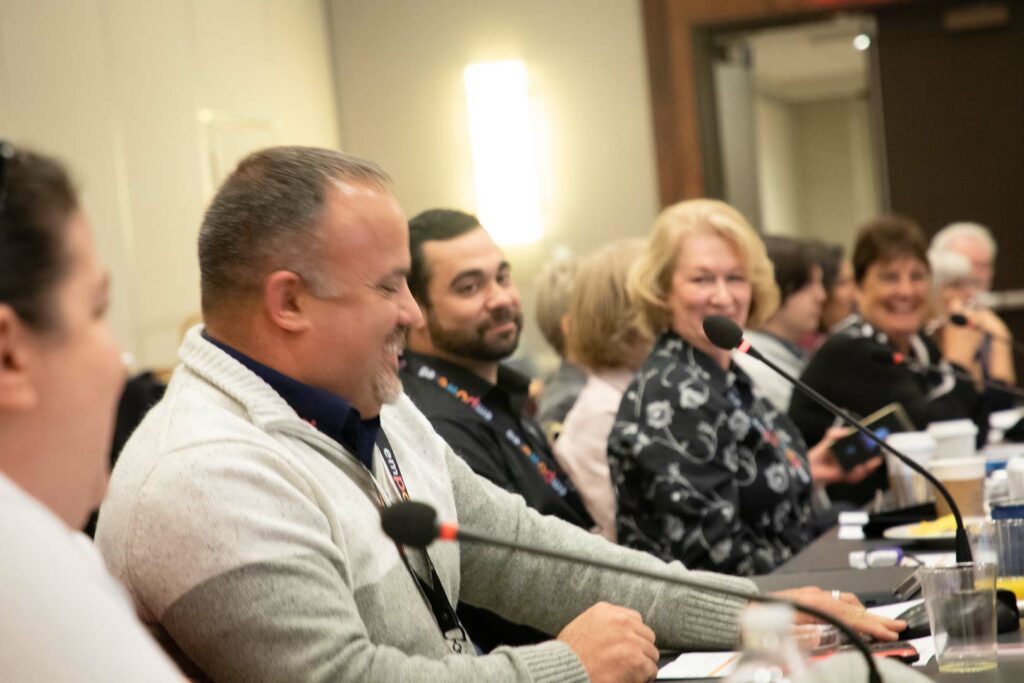How APH and National Prison Braille Provide Braille Materials
This content is also available in:
Español (Spanish)
The National Prison Braille Network (NPBN) is a national resource dedicated to providing braille materials with support from prison officials and inmates. It aims to enable inmates to contribute to society by providing braille educational material to blind and low vision children, young adults, and college students. With the help of American Printing House for the Blind (APH), the NPBN has made significant strides towards ensuring children have access to quality educational materials.
This remarkable initiative allows inmates to become valued contributors to their communities, fostering an environment where the pursuit of knowledge knows no boundaries. It’s the story of how braille transcription, undertaken by inmates, is changing lives and shaping tomorrow’s future.
The Importance and High Demand of Braille Transcription
For individuals who are blind or have low vision, braille is not just literacy but a lifeline to education and independence. Unfortunately, time and costs can be a hindrance for those needing educational materials transcribed. The NPBN has allowed for an intentional program for inmates to go through training to help address this issue. With over 46 prison braille programs currently operating in the United States, inmates can provide braille transcription, embossing, and braille proofreading, allowing students to access textbooks and tactile graphics.
Learning Braille

Transcribing braille in prisons requires a well-structured process to ensure accuracy and quality. Inmates participating in a prison braille program undergo comprehensive training offered by the Library of Congress, National Library Services for the Blind and Physically Handicapped (NLS). This course may be enhanced with a certified braille instructor to answer questions and provide support. Learning braille may take up to six months or more. Following the course, a passing grade on the participant’s submitted manuscript earns them the literary transcription certification.
Transcribing braille textbooks presents challenges due to the complex nature of the content. It involves transcribing technical terms, diagrams, and mathematical equations that require additional braille concepts. These educational materials require more collaboration between national organizations offering math and technical training and certification as well as tactile graphic training. All subject matter from grades K-12 is provided as needed in braille.
Surpassing Limitations

NPBN and APH are on a mission to equip inmates with unique and marketable skills that extend far beyond prison walls. APH and NPBN have witnessed numerous success stories of individuals whose participation in prison braille programs has positively impacted. Former NPBN participants have successfully reintegrated into society, utilizing skills they acquired during their participation in prison braille programs. Some individuals have pursued careers in braille transcription as contractors with APH and other organizations. They are leaders in our field, serving on committees and boards of professional development organizations and presenting braille and tactile graphic workshops. The National Braille Association recently elected and swore in an ex-offender as their president.
Learning braille to transcribe educational materials is not where the transformation ends. Inmates gain a sense of purpose and accomplishment with an opportunity to make a positive impact. They also learn valuable business skills that allow them to start their own business upon reentry into society. Those who continue after release are supported with needed materials to continue transcribing in collaboration with APH.
For many individuals who are blind or have low vision, access to braille and large print materials can be challenging. Many may face cost or time limitations or the need for a braille transcriber to provide educational materials in braille. The NPBN has filled the gap by providing quality braille textbooks and needed educational materials in a timely, cost-effective way. As young children explore their passions of algebra, ancient Greece, or astronomy, providing them tactile graphics and braille materials will enhance their exploration. NPBN allows students to access their education just as their sighted peers.
Students receiving braille materials are provided with much more than just that one book. That one book may open the door to new passions, new questions, and wonderings. It may allow for participation in discussions, confidence in asking questions, development of empathy and understanding for someone in a different era or travel to another place. Their access to education allows each child the ability to explore, hope and dream beyond the classroom.
Opening Doors

The impact of the NPBN is undeniable. It continues to transform the lives of inmates and students. It also strengthens communities. The National Prison Braille Network is not just about providing braille. It’s about transforming lives, one dot, one book, one tactile graphic at a time. Together, we can continue to walk through open doors to a brighter future for all.
NPBN Video